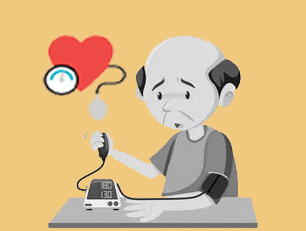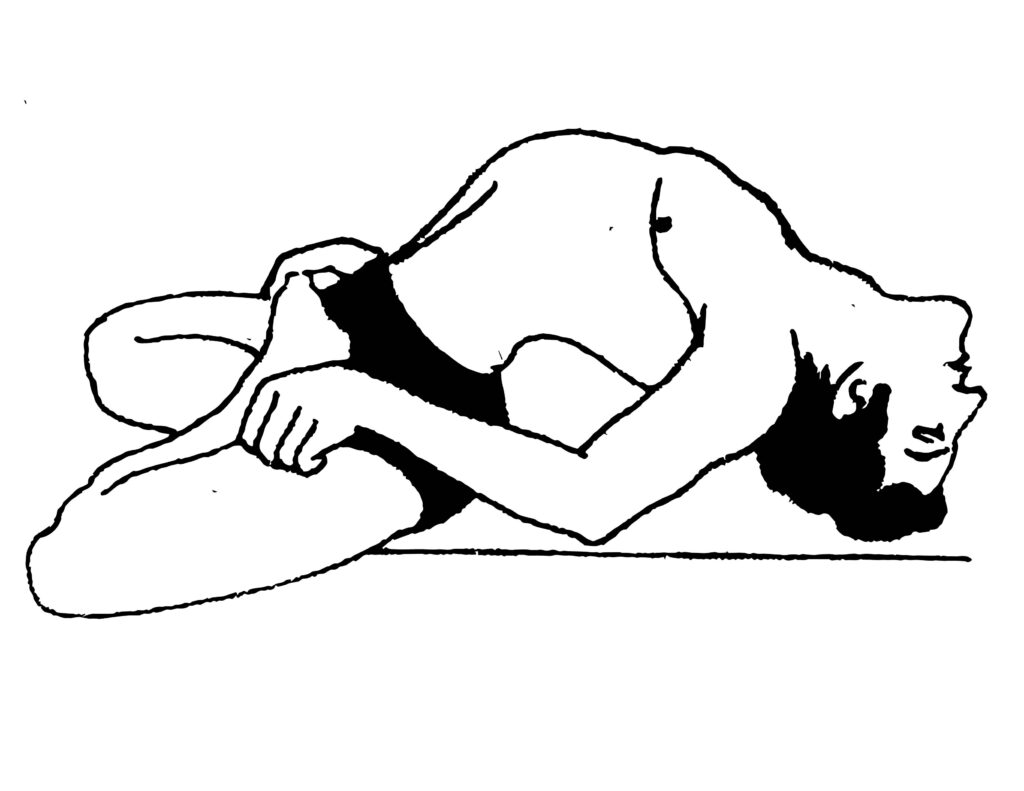
High blood pressure is a common condition in which the long-term force of the blood against the walls of your arteries is high enough that it can eventually cause health problems like heart disease. Blood pressure is determined by both the amount of your heart pumping and the amount of resistance to blood flow in your arteries. The harder your heart pumps blood and the narrower your arteries, the higher your blood pressure.
High blood pressure is caused by very simple reasons – a diet high in salt, fat, and cholesterol. Kidney, hormonal problems, diabetes, or family factors such as high blood pressure in parents. If your blood pressure is too high, some of the symptoms you may experience are-
- Headache
- Bleeding from the nose
- Fatigue
- Vision Problems
- Chest pain
- Difficulty breathing
- Irregular heartbeat
- Blood in urine
You will see all these symptoms. However, if this is a problem, reduce salt and non-vegetable food and increase the amount of vegetable food. If we follow some exercise along with food intake, it relieves the disease caused by high blood pressure.
Shavasan:
Lying down with your hands by your sides, relax your entire body. Palms facing up and some space between the legs. Close your eyes and settle your mind. Focus on breathing. Breathing will gradually slow down and the body will feel very light.
Advantage:
Generally, after each asana practice, one needs to spend a short time in Shavasana and finally a little longer. All the organs of the body get rest and become more functional. Especially the lungs and heart are very rested, blood circulation is good throughout the body. It is particularly effective in circulation is good throughout the body. It is particularly effective in relieving mental agitation, restlessness, insomnia, depression, etc. The mind becomes extremely calm, and mental concentration increases. Elimination of physical fatigue. Patients with high blood pressure need resuscitation.
Deep breathing or simple pranayama:
Sit in Padmasana or any other simple posture and breathe deeply with the spine straight. When you can’t breathe anymore, that is, after taking a full breath, slowly exhale as much as you normally can. Breathe again. Practice like this for 8/10 times in the beginning, then gradually increase the time to 4/5 minutes.
Try to exhale slightly longer than it takes to inhale. There will be no sound during inhalation and exhalation. If you feel tired during the practice, you can start again after taking a few normal breaths. Deep breathing practice can be done at the beginning or end of the asana practice.
Advantage:
Deep breathing or simple pranayama is especially beneficial for the lungs. As the body’s oxygen supply increases, the body’s waste products or carbon- dioxide gas get a chance to go out. Heart and lungs become stronger. Helps to cure and prevent colds, asthma, and other lung-related disease. The body and mind are very fresh and cheerful. Calms the mind. Improves mental concentration and memory. The structure of the chest is beautiful.
Vajrasana:

Bend your knees and sit on it with your ankles slightly apart. Keep your feet straight. Knees will be bent and big toes will be touching. Straighten the spine and place both hands loosely on the knees. Do 3 times for 1 minute. If you feel pain in the leg at first, give it for a short time (15/20 seconds). After some practice, do it twice for two minutes and the breathing will be normal.
Advantage:
Those who suffer from stomach diseases like indigestion, heartburn, constipation, etc. This asana practice of 5/10 minutes after eating is particularly beneficial. Regular practice improves digestion. It helps to cure leg pain and sciatica rheumatism. The nerve muscles of the legs are strengthened. If you feel leg pain due to standing for a long time, Vajrayana practice relieves you. Practicing Vajrasana sitting in bed just before going to bed at night improves sleep.
If you have asthma, find out which exercises are beneficial.
For some people, asthma is a minor substance that can become a major problem that interferes with daily activities and can lead to a life-threatening asthma attack. Asthma cannot be cured but its symptoms can be controlled. Asthma often changes over time. Asthma is a disease in which your airways become narrow and swollen and produce excess mucus.
This makes breathing difficult and can cause coughing, a whistling sound when you exhale(Frequently), and shortness of breath. For some people, asthma is a minor nuisance. Don’t neglect it. Certain exercises are beneficial if practiced daily. Described below-
Ustrasan:

Sit on Vajrasana. Stand on both knees in a ‘blue down’ position. Bend the body slightly backward and place first the right hand and then the left palm on the soles of the feet. Bend the head back and thrust the waist and thighs forward. In this condition, the front of the body from above the knees to the neck will be very tight. Breathing should be done 4/5 times for 30/40 seconds.
Advantage:
Regular exercise increases the volume of the chest cavity, increasing the air-holding capacity of the lungs. Pulmonary diseases are not easily treated, but they can be cured quickly. Helps to cure a cold, cough, cold, asthma, etc. Long inhalation and exhalation while in this asana give better benefits. Curvature is removed, and knees thighs, neck, back, and waist are well exercised.
Matsyasana Yoga:

Sit in padmasana and lie flat on your elbows. Raise the head with the help of both hands and press the palms on the ground. Try to hold the big toe and touch the elbow to the ground. The knees should not come off the ground. Switch legs and do 4 times, doing 30/40 seconds each time Breathing will be normal.
Advantage:
Regular practice of this asana increases the volume of the chest. It is especially beneficial for those who have a small chest. Increases the elasticity of the lungs, i.e. The ability to contract and expand, and helps prevent diseases such as bronchitis, asthma, colds,s and coughs. voice defects and stiffness are removed. Neck, shoulders, knees, and feet are well exercised. Increases flexibility of the spine and eliminates curvature.
